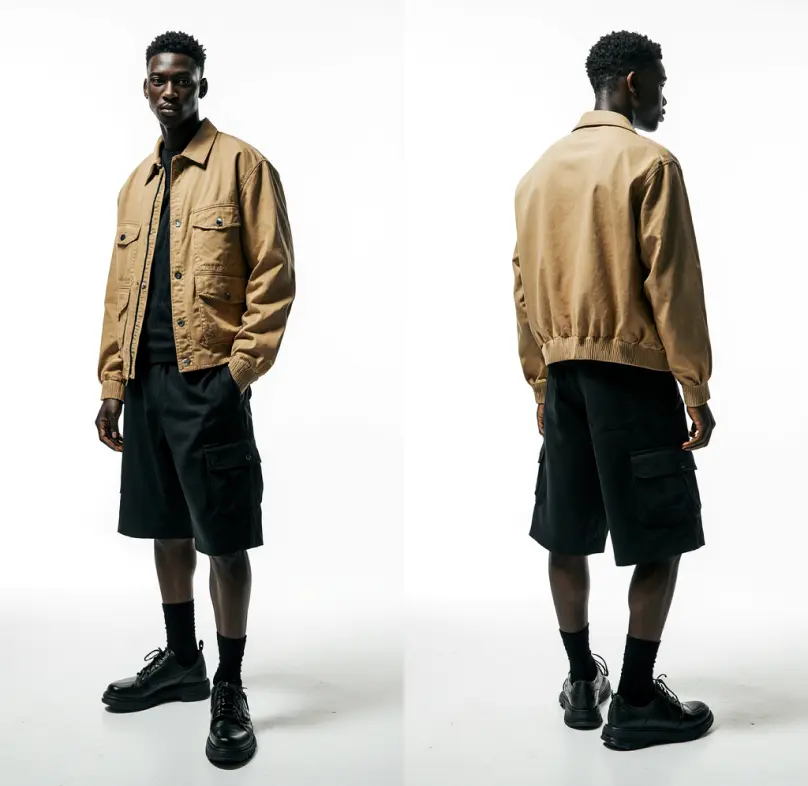

Feedback Loop

Set Up










If you are an entrepreneur, small business owner, or marketer, you are already tapping into the power of ecommerce. The fascinating figures and surprising facts we have gathered will give you more insight into how this industry is evolving and might also spark some new ideas for making money online.
eCommerce didn't just pop up overnight; it has a rich history full of intriguing firsts and pioneering moments that have shaped the world of online retail.
1979: Michael Aldrich connects a domestic television set to a phone line, creating the first form of online shopping. This innovation paved the way for the ecommerce boom of the 1980s and 1990s, even before the internet became mainstream.
1992: Charles M. Stack launches Book Stacks Unlimited, offering one of the earliest web-based shopping experiences. The future of bookstores was officially online.
1993: O'Reilly Media introduces the Global Network Navigator (GNN), the first online marketplace. The concept of a virtual shopping mall was born.
1994: Pizza Hut launches "PizzaNet," letting customers order pizza online. This early leap into ecommerce set the stage for the food delivery services we rely on today.
1994: A 21-year-old entrepreneur named Dan Kohn sells a Sting CD on his website, NetMarket. This simple transaction marked the dawn of ecommerce. Who knew a single CD could kickstart a global revolution?
1994: Netscape introduces Secure Socket Layers (SSL), an encryption certificate ensuring safe data transmission over the internet. This innovation tackled early concerns about online security and facilitated safe ecommerce transactions.
1995: Jeff Bezos starts Amazon in his garage as an online bookstore. Within a month, he is selling books to all 50 US states and 45 countries. From these humble beginnings, Amazon grew into the ecommerce giant we know today, though it didn't turn a profit until 2003.
1995: eBay (then AuctionWeb) sees its first sale: a broken laser pointer for $14.83. This quirky sale to a collector of broken laser pointers highlights the unexpected and diverse nature of online marketplaces.
1999: Jack Ma founds Alibaba in his apartment in Hangzhou, China. Today, Alibaba is a global ecommerce powerhouse, showcasing the limitless potential of online retail.
2004: Blockbuster launches Blockbuster.com for online DVD subscriptions, but the rise of Redbox and Netflix leads to the demise of Blockbuster's dominance in home video entertainment.
2010: Warby Parker shakes up the eyewear industry with their home try-on programme. Customers could try glasses at home before buying, blending the convenience of online shopping with the confidence of an in-store experience.
2010: Programmer Laszlo Hanyecz makes history by paying 10,000 Bitcoins for two pizzas, marking the first real-world Bitcoin transaction. This legendary moment stands as a milestone in digital currency and ecommerce history.
Have you ever wondered who rules the ecommerce world? Here are the biggest players and trends shaping online retail right now.
When it comes to market dominance, these five countries lead the way:
Among these giants, the United Kingdom shines as Europe's most lucrative ecommerce market.
The digital highways are bustling, and the most visited sites are:
The top 10 ecommerce companies, as listed on companiesmarketcap.com, currently include players from the USA, China, Argentina, and Singapore. They dominate the sector's market capitalisation, totalling $2.30 trillion (about 94%) out of $2.45 trillion for the entire list of 97 companies. Here is the breakdown of the rulers of ecommerce:
Amazon: Holding the highest market share at 37.6% of all ecommerce sales, Amazon remains the undisputed leader. Amazon also leads in the cloud infrastructure market with a 31% share in the first quarter of 2024.
Pinduoduo: China's Pinduoduo climbs to second place in 2024 from the 4th place in 2022, highlighting its global influence.
Alibaba: Despite challenges, Alibaba stands strong at third, remaining a key player in both domestic and international markets.
eBay: Known for its auction model, eBay ranks 9th, maintaining its position as a significant force in ecommerce.

Amazon also dominates in mobile app downloads, with SHEIN closely following suit.
Grocery retail takes the lead, projected to grow annually by 14.3% until 2028, outpacing the growth rates of the fashion and electronics sectors.

When it comes to paying online, how do people most often pay? Here is the breakdown:
Cryptocurrencies are gaining popularity due to benefits like lower transaction fees, reduced fraud risk, and faster international payments. Platforms like Shopify now accept multiple cryptocurrencies, suggesting a trend toward more diverse payment options. It is possible that cryptocurrencies might become the top payment method in the future!
eCommerce has a dark side: fraud. In 2022, online platforms lost $41 billion to fraud. By 2023, this rose to $48 billion. For entrepreneurs and small business owners, robust fraud prevention measures such as routine security audits, Address Verification Services (AVS), and Hypertext Transfer Protocol Secure (HTTPS) are essential.
The battle against ecommerce fraud is fuelling a booming industry. As monetary losses and consumer scams rise, businesses must protect their finances as well as their customers'. Hence, fraud detection tools, ranging from verification software to IP fraud-scoring, play a vital role. It is projected that by 2027, the market for ecommerce fraud prevention will surpass $100 billion.

Types Of Fraud Experienced By Merchants - Past 3 Year Rankings & Global Incidence (2023). 2023 Global eCommerce.Payments and Fraud Report
The nuances of online shopping behaviour can give you food for thought and contemplation.
Online shopping is widely favoured due to its convenience, time-saving benefits, greater variety, and fewer taxes. Approximately 34% of shoppers make an online purchase at least once a week. Shoppers aged 31-44 and 55-65 account for 68% of online shopping expenditures.
However, around 70% of shopping carts are abandoned, primarily due to unexpected costs like shipping and taxes (47%). Other deterrents include account creation requirements (25%), slow delivery times, privacy concerns, and complicated checkout processes.
Despite these issues, 71% of shoppers believe they get better deals online. Additionally, over 50% of shoppers purchase from international retailers.
Understanding consumer behaviour psychology is just as crucial as having a great product or a smooth website. Here is how psychological insights are shaping online shopping:
Amazon's two-day Prime shipping has transformed ecommerce logistics, setting a high standard for speed and convenience. But beyond logistics, there is a fascinating psychological aspect: when customers know they can get items almost immediately, they are more likely to click "buy now" without hesitation.
Women are frequent online shoppers, making approximately seven purchases per year, compared to men who make purchases around five times annually. Interestingly, when men do shop online, they tend to spend more, averaging $220 per transaction, while women typically spend around $151. Additionally, women are quick decision-makers, closing the deal 7% faster than their male counterparts. Could this be an explanation for why many online retailers target their social media campaigns at women?
Offering a wide array of products may seem ideal, but it can lead to fewer sales. The "paradox of choice" suggests that too many options causes decision paralysis and lower conversion rates. Studies indicate a "sweet spot" of around 4 to 6 choices, providing enough variety without overwhelming customers. This strategic selection reduces cognitive load and boosts purchase likelihood. Incorporating clear, concise descriptions and high-quality images makes it easier for customers to compare and confidently decide.
Free shipping drives online shopping, with 50.6% of people citing it as a major reason for their choice. While convenient and reducing the need for trips to physical stores, ecommerce presents a sustainability paradox by contributing to significant environmental challenges.
Packaging Waste: Each online order typically involves layers of cardboard, plastic, and bubble wrap, creating a massive waste problem when multiplied by millions.
Delivery Emissions: Home deliveries further contribute to carbon emissions from delivery trucks. However, the rise of drone deliveries and contactless options offers hope for mitigating this impact.
Free Returns: Although attractive to consumers, free returns often result in products being discarded in landfills, as processing them can be more costly than their value.
Despite these challenges, positive changes are on the horizon. As awareness grows, both businesses and consumers are pushing for more eco-friendly practices. By 2025, 80% of consumers are expected to prioritise sustainability in their purchasing decisions.

eCommerce is driving surprising trends across various sectors. Here are some fascinating impacts of ecommerce on retail.
While ecommerce has undoubtedly transformed traditional retail, it has also breathed new life into brick-and-mortar stores. Brands like Warby Parker and Bonobos, which started online, have discovered the value of physical locations. These clicks-to-bricks strategies reveal that online and offline retail are more complementary than competitive. It is a curious paradox: the digital world driving foot traffic into physical stores.
eCommerce has opened doors for niche markets in ways traditional retail never could. Take Etsy, for instance. This platform has empowered countless artisans and crafters to reach a global audience. Handmade soaps, vintage items, and custom artwork have become significant market segments.
Direct-to-consumer brands are transforming the retail space by cutting out the middleman. Companies like Casper, Warby Parker, and Dollar Shave Club sell directly to consumers online, offering better prices and personalised shopping experiences.
While B2C ecommerce grabs most of the headlines, B2B platforms like Alibaba and Amazon Business are facilitating massive transactions between businesses. According to Research and Markets, the B2B ecommerce market is projected to be worth over $25 trillion by 2028.
The evolution of ecommerce has taken a significant turn with the rise of social commerce, where platforms like Instagram and TikTok have become influential forces. Social commerce merges social interaction with shopping, allowing users to make purchases directly within their favourite social media apps.
Instagram stands out with the highest average order value for referred customers at $65, followed by Facebook at $55, Twitter at $46, and YouTube at $38. The influence of social commerce is growing rapidly, with projections estimating the market will reach $8.5 trillion by 2030.
A significant driving force behind this surge is the role of influencers. These online trendsetters can make a product sell out within minutes with a single endorsement. Influencer marketing is also witnessing the rise of virtual influencers like Lil Miquela, a computer-generated character with a lifelike appearance and millions of followers, functioning much like a human influencer.
Christopher Travers, the founder of VirtualHumans.org, notes that virtual influencers can match and even surpass human influencers in engagement and control. They offer nearly three times the engagement rates of real influencers, making them highly valuable for brands. Platforms dedicated to influencer marketing are now essential for connecting brands with these virtual personas, ensuring smooth and effective collaborations.
Here are the top five virtual influencers in the industry:

Subscription-based ecommerce, as exemplified by companies like Birchbox and BarkBox, has surged in popularity, reshaping consumer shopping behaviours. Spanning from beauty products to exotic snacks, subscription boxes now cater to nearly every niche market imaginable, offering a spectrum of options from essential deliveries to curated monthly surprises.
These services tap into the modern consumer's demand for personalised experiences, convenience, and the thrill of discovering new treasures, making shopping more enjoyable. Predictions suggest that by 2025, the subscription ecommerce market will hit $60 billion, highlighting the potential of this retail approach.
When it comes to online shopping, there is no denying the top contenders: Black Friday and Cyber Monday.
In 2023, online shoppers spent $9.8 billion on Black Friday, marking a 7.5% increase from the previous year. Despite all the uncertainties, consumers were still eager to grab deals.
Then came Cyber Monday, pulling in $12.4 billion in sales in 2023, a 9.6% jump from the year before. Originating in 2005 to extend the holiday shopping spree post-Thanksgiving, Cyber Monday has solidified its position as the king of online shopping days during Cyber Week.
Throughout November and December 2023, holiday spending hit $222.1 billion in online sales. Electronics took the lead with $50.8 billion in sales, followed by apparel at $41.5 billion, furniture at $27.3 billion, and grocery items at $19.1 billion.
While online sales during the 2023 holiday season saw a 4.9% increase from 2022, it still didn't quite match the pre-pandemic surge, which witnessed a 32.1% spike between 2019 and 2020.
Hyper-personalisation is reshaping the retail industry and captivating consumers worldwide. By 2024, personalised marketing is projected to represent 40% of ecommerce revenue. Looking ahead to 2026, hyper-personalisation will become the standard in ecommerce.
So, what does this transformation entail? Firstly, AI and machine learning are driving us towards a future where automated customer interactions are expected to reach 75% by 2025. Just imagine chatbots and AI-driven customer service enhancing your shopping experience with every click.
At the forefront of this revolution are modern AI systems. They analyse your browsing history, purchase behaviour, and social media activity to craft marketing strategies so precise they can predict your desires before you are even aware of them. Companies like Stitch Fix are leading the charge, using AI to provide personalised clothing recommendations tailored to your unique taste.
Furthermore, AR technology is merging physical and digital shopping. For example, with a tap on Snapchat's AR shopping lenses from your smartphone, you can already virtually try on clothes and makeup, transforming impulse buys into informed decisions.
Voice commerce is also on the rise. By 2026, smart speakers and voice assistants are projected to generate $80 billion in sales, making shopping with just your voice the new norm.
Lastly, the metaverse looms on the horizon. By 2025, virtual storefronts and immersive experiences will blur the line between reality and virtuality in a 3D space and offer a whole new dimension to online shopping.
eCommerce is poised for substantial growth and change. Here are some key insights into its trajectory.

In 2024, the entire ecommerce sector is projected to grow by 8.8%. Additionally, digital wallets are anticipated to handle over 50% of all ecommerce payments worldwide. Online retail purchases are expected to represent 20.1% of all retail transactions, with global ecommerce sales forecasted to exceed $7 trillion. The market is set to reach $6.3 trillion, up from $5.8 trillion in 2023.
By 2025, global mobile commerce sales are expected to reach $728.28 billion. Emerging markets, especially in Africa and Southeast Asia, are primed for rapid expansion. India will lead in ecommerce growth, followed by Saudi Arabia, Indonesia, Australia, and the Philippines. Conversely, minimal growth in online shopping is predicted in Latvia, Ukraine, and France.
In 2026, global ecommerce sales are projected to surge to $9.66 trillion.
By 2027, 22.6% of total retail purchases are expected to occur online.
Looking ahead, it is projected that by 2040, 95% of all purchases will be made online.

As the world of ecommerce, full of surprises and innovations, continues to evolve with technological advancements and shifting consumer preferences, the future promises a mosaic of opportunities and challenges. These fun facts and future trends highlight the industry's dynamic nature and provide valuable insights for anyone looking to stay informed and adaptable.
Stay ahead of the curve with Fourmeta UK – fortune favours the prepared. Keep your eyes on the horizon, and watch your business soar!
P.S. Want to dive deeper into the world of eCommerce platforms? Check out our blog posts packed with fun facts about Shopify: Fun facts about Shopify you might not know and the ever-powerful social media landscape: Fun facts and statistics about social media. There's always more to learn in the exciting world of online commerce!
